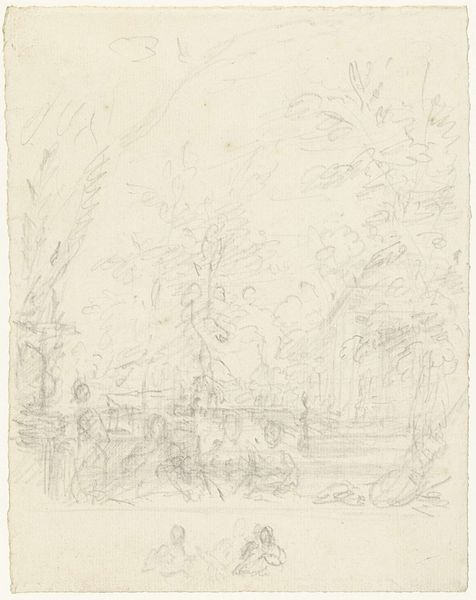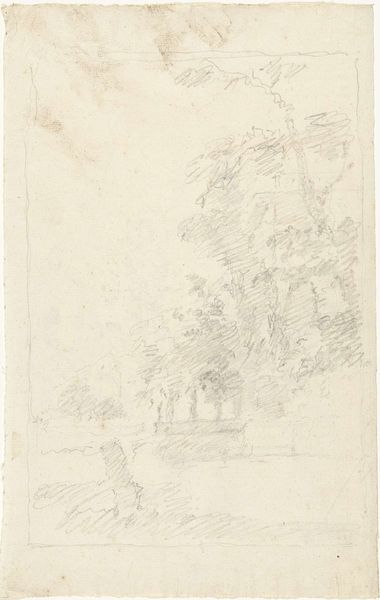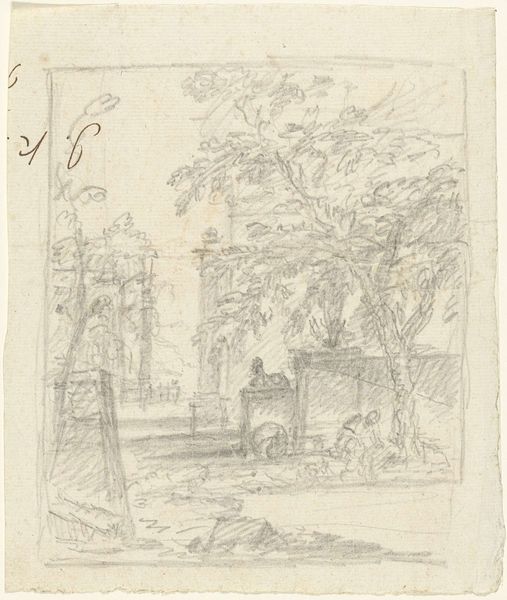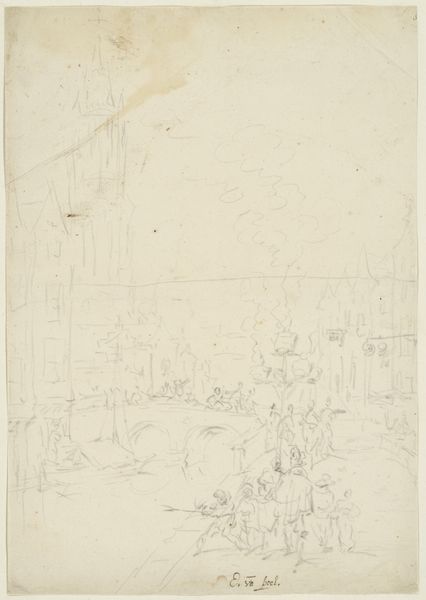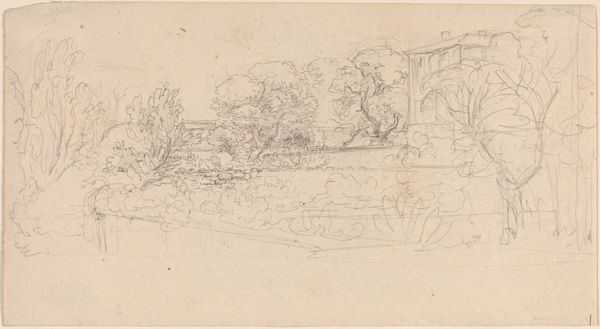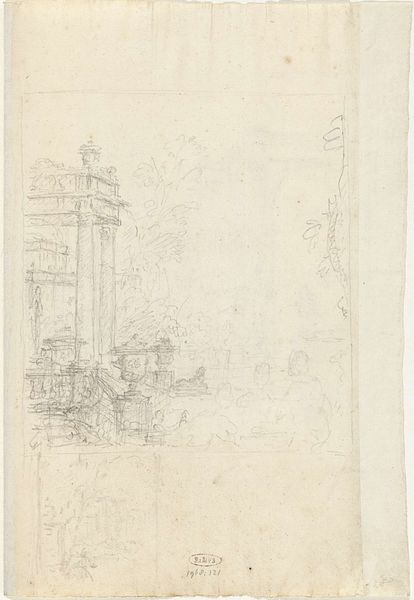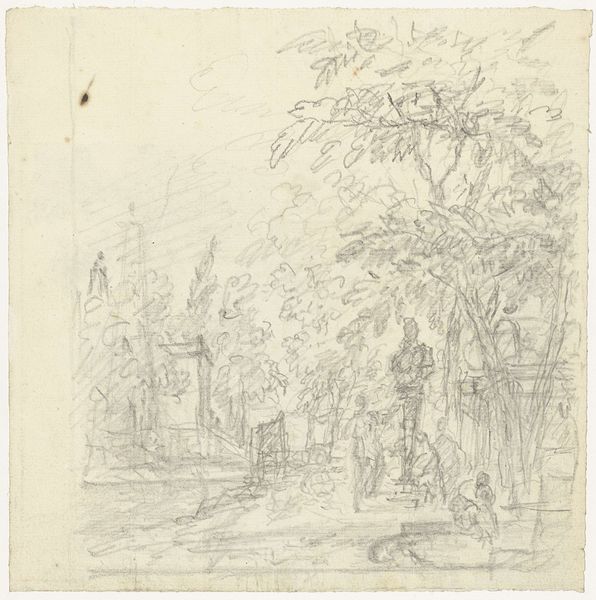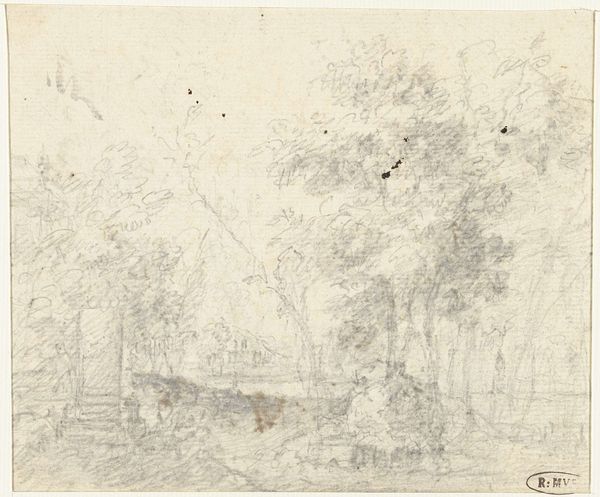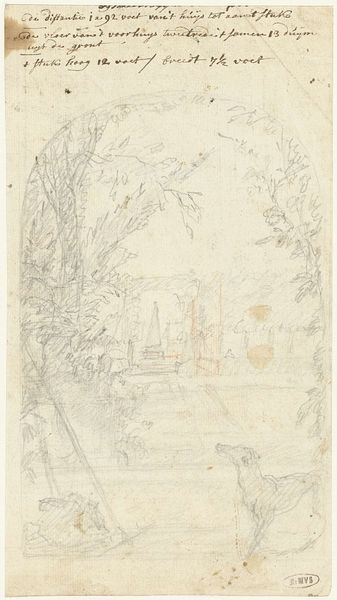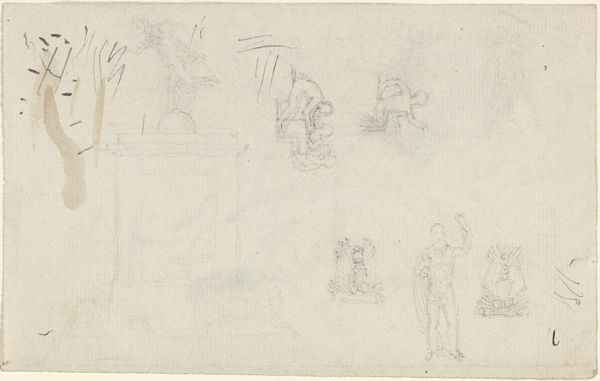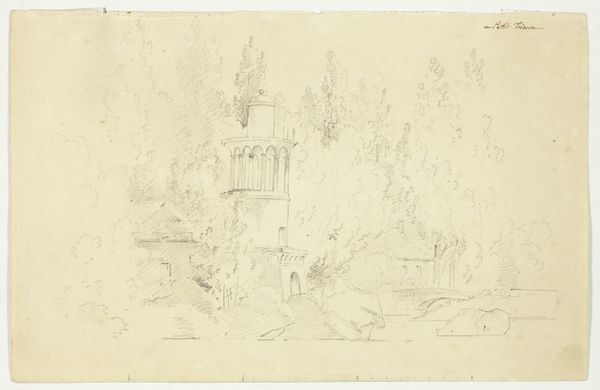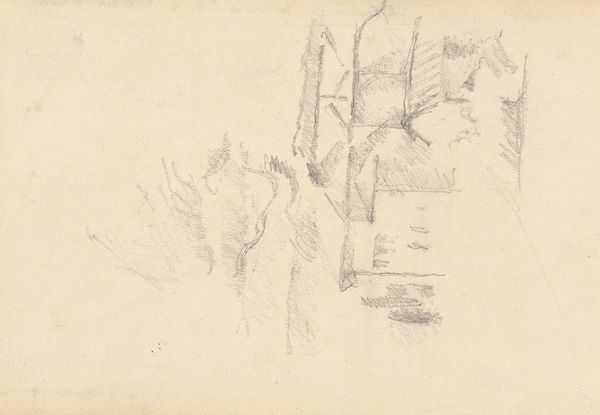
drawing, pencil
#
drawing
#
garden
#
landscape
#
figuration
#
pencil
#
rococo
Dimensions: height 328 mm, width 205 mm
Copyright: Rijks Museum: Open Domain
Curator: What an ethereal sketch! There's a light touch here, almost a dreamlike quality to the scene. Editor: This is Figuren rond een standbeeld in een tuin—"Figures around a statue in a garden"—a pencil drawing from Dionys van Nijmegen, probably done sometime between 1715 and 1798. Curator: A statue taking center stage surrounded by onlookers… it prompts consideration of who is being honored here and why. What stories do those gathered tell each other, and about whom? It evokes discussions around public memory, maybe even mythmaking. Editor: Yes, the placement of the statue upon that tiered plinth suggests an exercise of power, literally elevated in a public space that might even shape beliefs around heroism or moral conduct, which is very much of that period, I'd say. Curator: But consider how informally the figures gather. They aren't necessarily beholden to the power you describe, are they? I'm curious about how those social relationships subvert any authoritarian message emanating from the symbolic sculpture. There’s such a Rococo playfulness suggested in their posture. Are they in reverence or mocking? Editor: Ah, that’s interesting. And it leads me to consider how a garden, in the 18th century, also functioned as a political stage, somewhere between theatre and power. It would have served as a controlled and cultivated setting for performances of social distinction, particularly if one considers that drawing rooms and the salons of homes acted as the domain of women and influenced the cultural climate of the era. Curator: Looking closely at this setting does suggest a very staged moment. Notice how the light pencil rendering creates an atmospheric effect, making everything seem slightly ephemeral—but even staged authenticity can be analyzed through a lens of power dynamics and performed identity. Editor: I agree, and examining Van Nijmegen's work reveals an artist engaged with the social discourse of his time. It’s a subtle reminder of how gardens were both sites of leisure and complex statements of socio-political ambition. Curator: This drawing does far more than record a garden; it invites discussions of identity and representation, public memory and, for some viewers, their own lived experience when faced with monuments, statues, and public spaces. Editor: Indeed, this modest work provokes inquiries into the social and institutional role of art, particularly with regards to constructing public memory and societal discourse.
Comments
No comments
Be the first to comment and join the conversation on the ultimate creative platform.
